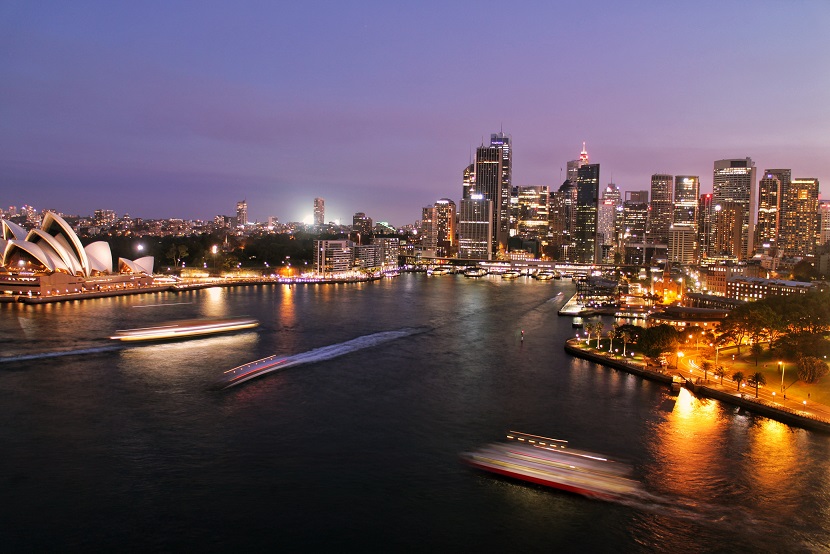DEEPENING Australia’s economic engagement with South-east Asia is one of the Australian government’s top priorities.
Australian Prime Minister Anthony Albanese has appointed me to lead a South-east Asia Economic Strategy to 2040, and I am consulting political and industry leaders to hear their perspectives. This week, I am visiting Indonesia and Singapore, two of the region’s economic powerhouses.
Australia wants to see more economic engagement with our region. That’s why our strategy will identify current and emerging opportunities to bolster two-way trade and investment between Australia and the 10 Asean member states and Timor-Leste.
We appreciate that Australian products, services and expertise are valued in South-east Asia. But what I’m hearing from partners is both sides can do more, especially in developing skills and investment.
We share a solid foundation on which to further mutual growth. South-east Asia is already one of the world’s most dynamic economic regions and its growth is increasing and developing its needs providing great opportunities for local and global partners.
Australia’s two-way trade with the countries of Asean passed A$127 billion (S$117.3 billion) in 2021, or nearly 14 per cent of Australia’s overall trade. This is greater than our two-way trade with Japan or the US.
Australia shares an established portfolio of 16 bilateral and regional free trade agreements with South-east Asia, such as the Asean-Australia-New Zealand Free Trade Agreement and the Regional Comprehensive Economic Partnership Agreement. Our current trade situation is good, and there are many existing and emerging needs we can respond to.
As our South-east Asian partners look for economic options to boost growth, Australia has much to offer. Australia and indeed our whole region has benefited enormously from the growth of global trade and investment. Our future growth will depend in large part on how we address barriers to trade and investment and indeed do all we can to facilitate great flows throughout the region.
Through trade diversification, including of supply chains, we can promote economic resilience and improve food and energy security. Australia is a trusted and reliable supplier of high-quality grain, meat, fruit and vegetables to the region.
We also invest in sustainable, resilient and productive agriculture and food systems. In 2021-2022, Australian agricultural, fisheries and forestry trade with South-east Asia totalled A$20 billion. The region is also a significant consumer of Australia’s energy, minerals and education.
As a developed economy, Australia has an extensive service sector which is able to share its expertise with the region.
Australia’s world-class universities are consistently ranked among the world’s best and are a vast resource of research and innovation. They are a good example of how our services sector can contribute to capability building across the region.
Many other contributions are being made across the services sector including health, mining services, finance and accounting; these have good prospects for future growth.
Australia is committed to working with South-east Asia to build a resilient, clean energy sector. For example, the landmark Singapore-Australia Green Economy Agreement (GEA) supports mutual economic and climate change objectives, and will help build global clean energy capacity.
We need to demonstrate our potential as a renewable energy superpower, and supporting net-zero transitions is in Australia’s and the region’s interest.
Shared challenges, such as climate change, need a shared solution. Australia is ambitious for what we can achieve together. We are supporting enhanced climate action in South-east Asia, including through increased climate finance partnerships, such as our A$200 million commitment towards a climate and infrastructure partnership with Indonesia.
Emerging regional trends, for example growing middle classes, demographic shifts, digitalisation and increasing importance of sustainability, will transform South-east Asian economies over the next two decades.
The consumer class in South-east Asia is increasing with greater purchasing power. In Indonesia, the Philippines, Malaysia and Vietnam, immense growth is set for the next few decades. By 2040, across most South-east Asian economies, there could be almost 26 million households with disposable incomes of over US$35,000.
One in two Australians are either born overseas or have parents who were born overseas, and many are from our region. In addition to their deep contributions to Australian society, these Australians and the many students and temporary workers from the region provide a wealth of talent to drive the further economic links. This is particularly so in the vital services sector.
The Australian government’s Blueprint for Trade and Investment with Indonesia is an example of the strong interest from Australian companies considering market opportunities in the region. With Indonesia predicted to be fourth-largest economy in the world by 2045, it’s easy to see why.
Singapore is Australia’s largest trade and investment partner in Asean and our business ties are strong.
We remain ambitious in how we will deepen our economic opportunities, particularly as we give effect to the GEA and work together on a bilateral Food Pact. If we can build similarly strong economic relationships with other countries through fulfilling partnerships and opportunities, this will bring long-term benefits to us and the region.
Throughout the Covid-19 pandemic and recent world events, Australia’s international trade has remained strong in most sectors. This resilience, coupled with partnerships and economic trends in our region present an excellent opportunity to deepen economic engagement with South-east Asia.
The writer is Australia’s Special Envoy for South-east Asia, and a former CEO of Macquarie Group.
Source: The Business Times. Link Here.
March 27, 2023













